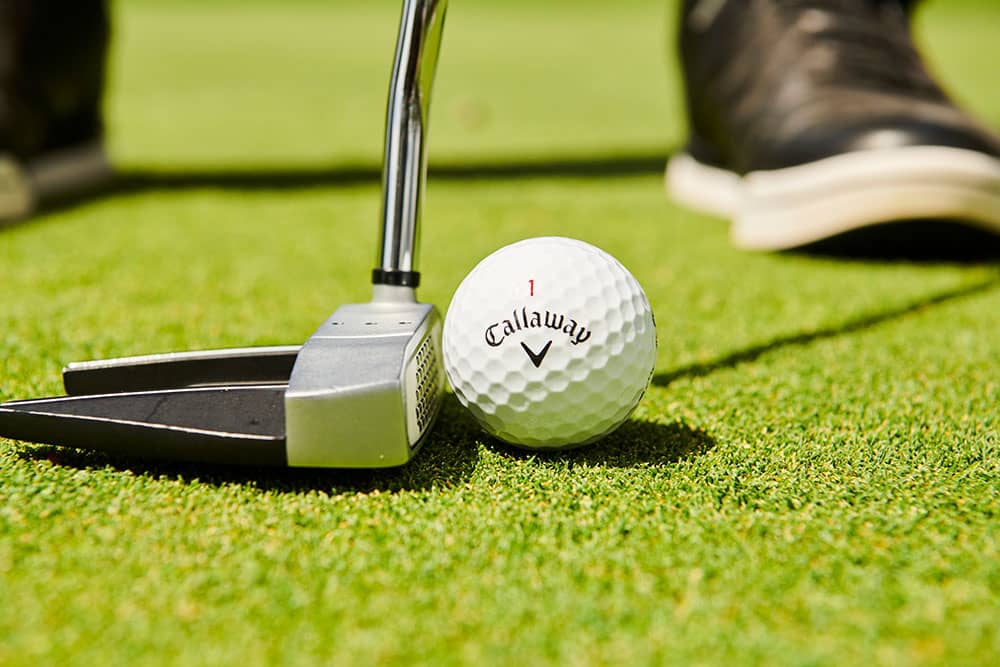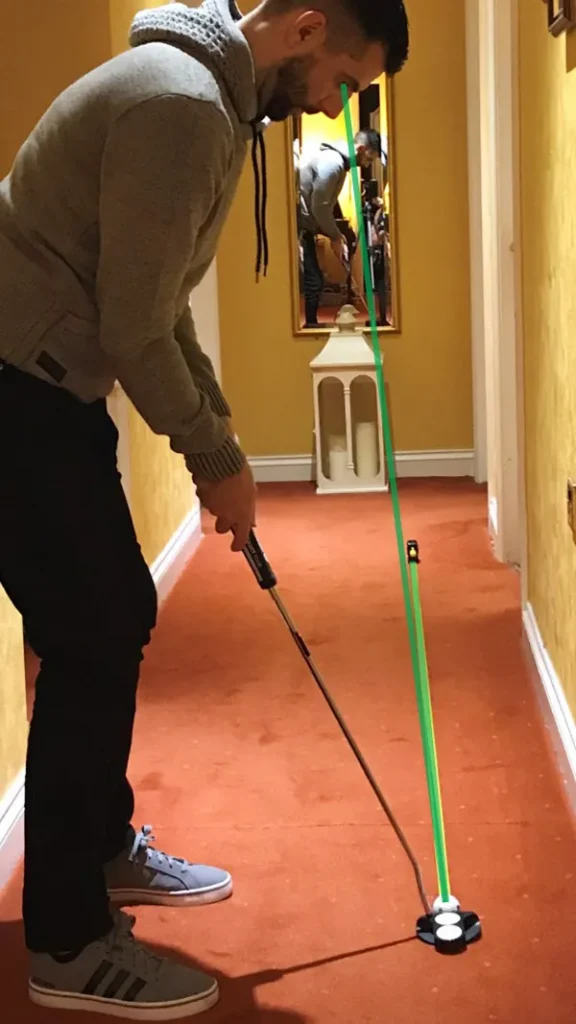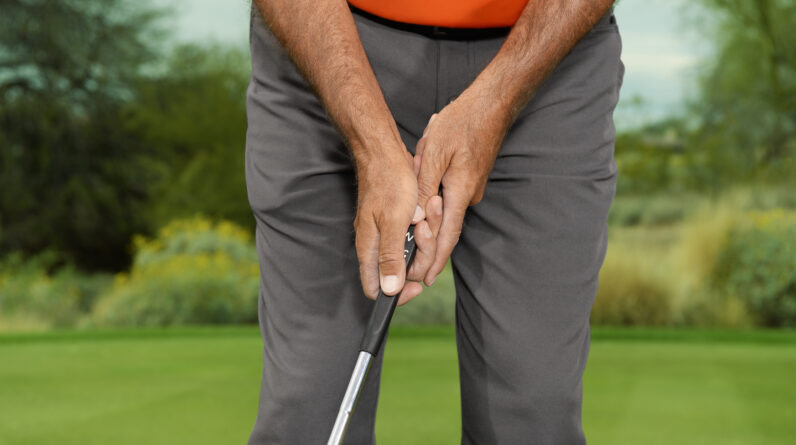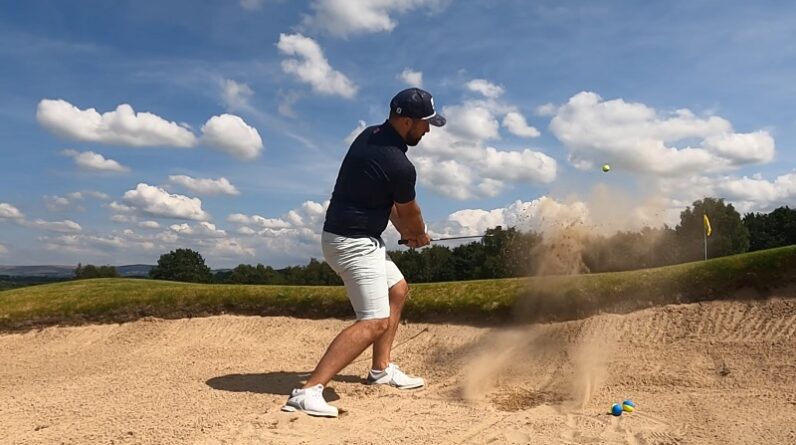If you want to up your game on the golf course, improving your putting accuracy is key. Whether you’re a beginner or have been playing for years, nailing those crucial putts can make all the difference. So, how can you refine your skills and become a putting pro? In this article, we will explore some effective strategies and techniques to help you improve your golf putting accuracy. Get ready to take your game to the next level and start sinking those putts like a champ!
Technique and Fundamentals
Putting accuracy in golf is essential for lowering your scores and becoming a more proficient golfer. To improve your putting accuracy, it is crucial to master the basic techniques and fundamentals. Let’s explore three key aspects of putting technique: grip, stance, and alignment.
Grip
The grip is the foundation of your putting stroke. The two most popular putting grips are the traditional and the claw grip. In the traditional grip, your lead hand (left hand for right-handed golfers) is placed on the top of the grip, with your trailing hand (right hand for right-handed golfers) placed below it. This grip promotes a more uniform stroke and allows for better control. Alternatively, the claw grip positions your lead hand in a claw-like shape, with the palm facing towards you. The trailing hand supports the grip from the side. Experiment with different grips to find the one that feels most comfortable and natural for you.
Stance
Your stance plays a crucial role in maintaining stability and balance during your putting stroke. To achieve a solid putting stance, position your feet shoulder-width apart, with your weight evenly distributed. Bend your knees slightly to promote a relaxed and comfortable posture. It’s important to avoid excessive movement while putting, so maintain a stable lower body throughout your stroke.
Alignment
Proper alignment is key to striking the ball accurately towards your target. When setting up to putt, ensure your feet, hips, and shoulders are aligned parallel to your intended target line. To check your alignment, use an alignment aid or even your putter shaft. Aligning your putter face perpendicular to the target line is also crucial for a straight putt. Take your time to ensure your alignment is correct, as even a slight misalignment can cause your putts to veer off course.
Visualization and Mental Game
Putting accuracy is not just about the physical technique; your mental game plays an equally important role. Enhancing your visualization skills, developing a pre-shot routine, and maintaining focus and confidence are essential for consistently sinking putts.
Visualizing the Putt
Before executing a putt, take a moment to visualize the path of the ball rolling towards the hole. Imagine the line, the speed, and the break of the putt. By visualizing a successful putt, you are programming your mind to execute the desired outcome.
Developing a Pre-shot Routine
Establishing a consistent pre-shot routine can help you find focus and rhythm before each putt. Your routine could include visualizing the putt, taking a few practice strokes, or even a deep breath to calm your nerves. Find a routine that works best for you and stick to it to create a sense of familiarity and confidence.
Maintaining Focus and Confidence
Putting requires mental resilience, as mistakes and distractions can easily shake your confidence. To maintain focus and confidence, develop the ability to let go of previous putts and stay present in the moment. Trust in your abilities and focus on executing each putt to the best of your ability, one shot at a time. Choose positive self-talk over self-criticism and believe in your skills.

Practice Drills
Consistent practice is vital for improving your putting accuracy. Incorporating various practice drills into your routine can help develop muscle memory, sharpen your skills, and enhance your overall performance on the greens. Let’s explore three effective practice drills to enhance your putting accuracy.
Distance Control Drill
Distance control is crucial for avoiding three-putts and consistently leaving yourself with manageable second putts. To practice distance control, set up a series of cones, tees, or markers at different distances from the hole. Start with shorter distances and gradually work your way to longer putts. Focus on getting the ball to stop within a specific target area around the hole. This drill will help you develop a better feel for different distances and improve your ability to control the speed of your putts.
Gate Drill
The gate drill is an excellent drill for improving your putting accuracy and alignment. Place two alignment sticks or clubs parallel to each other, creating a gate a few inches wider than the width of your putter. Position the gate a few feet in front of you, aligning it with your target line. Practice hitting putts through the gate, ensuring the putter face remains square throughout the stroke. This drill will help train your eye for alignment and promote a more consistent putting stroke.
Coin Drill
The coin drill is an effective drill for refining your aim and accuracy. Place a coin or small marker on the green, a few feet away from the hole. Align yourself to the coin and aim to putt the ball directly over it. This drill will challenge your ability to start the ball on your intended target line and ensure you have a consistent putting stroke.
By incorporating these practice drills into your routine, you can develop and refine the necessary skills to improve your putting accuracy and grow your confidence on the greens.
Reading and Understanding Greens
Reading and understanding the dynamics of the greens is crucial for accurate putting. Having a comprehensive understanding of assessing slope, observing grain direction, and noting green speed will greatly enhance your ability to read greens effectively.
Assessing Slope
Before attempting a putt, carefully observe the slope of the green. Greens can have subtle or pronounced slopes that can significantly affect the break of your putt. Look for visual clues such as the direction of the grass, and use your feet to feel the slope. Practice reading the greens from different angles to develop a better understanding of how slopes will impact your line and speed.
Observing Grain Direction
Grain refers to the direction in which the blades of grass on the green are growing. The grain of the green can influence the speed and break of your putts. To determine grain direction, observe the darker or lighter shade of the grass or look for patterns left by mowing. Putts hit with the grain will be faster, while putts hit against the grain will be slower. Understanding and adapting to the grain will give you an edge in accurately reading the greens.
Noting Green Speed
The speed of the greens can vary from course to course, and even from day to day depending on factors such as moisture and weather conditions. Take the time to gauge the speed of the greens during warm-up and practice. This will help you adjust your stroke and anticipate the distance your putts will roll. Pay attention to the speed of your practice putts, as this will provide valuable information for reading greens during your round.
By honing your skills in assessing slope, observing grain direction, and noting green speed, you will develop the ability to read greens accurately and make confident decisions when it comes to your putting lines and speeds.

Using Tools and Aids
Various tools and aids are available to aid in improving putting accuracy. Here, we explore three popular tools that can enhance your putting skills.
Putting Mirror
A putting mirror is an excellent tool for analyzing and improving your putting stroke. It provides immediate visual feedback on your setup, alignment, and stroke mechanics. By utilizing a putting mirror during practice sessions, you can make necessary adjustments to your posture, hand placement, and eye alignment. Practicing with a putting mirror will help you develop a more consistent and effective putting stroke.
Alignment Stick
An alignment stick is a versatile tool that can help improve your alignment and stroke consistency. Place the alignment stick on the ground, aiming it towards your target line. This visual aid will serve as a guide to ensure your feet, hips, and shoulders are aligned correctly. It will also help you maintain a square putter face throughout your stroke. Regularly incorporating an alignment stick into your practice routine will reinforce sound fundamental techniques and promote better putting accuracy.
Putter Laser
A putter laser is an advanced tool that uses laser technology to analyze and improve your putting stroke. It attaches to your putter shaft and provides real-time feedback on the path and face angle of your putts. By utilizing a putter laser during practice, you can identify and correct any inconsistencies or faults in your stroke mechanics. This tool is particularly helpful in developing a more repeatable and accurate putting stroke.
Using tools and aids can provide valuable insights into your putting technique and help you make necessary adjustments for better accuracy. Experiment with different tools to find the ones that work best for you and incorporate them into your practice sessions.
Physical Fitness and Conditioning
Physical fitness and conditioning play a vital role in improving your putting accuracy. A strong and flexible body will allow you to maintain proper posture, execute a consistent stroke, and stay focused throughout your rounds. Let’s explore three key areas of physical fitness that can greatly impact your putting performance.
Flexibility Exercises
Flexibility is crucial for achieving optimal posture and a fluid putting stroke. Incorporate regular stretching exercises into your routine to improve joint mobility and increase muscle flexibility. Focus on stretching your hamstrings, hips, shoulders, and wrists. Improved flexibility will enable you to maintain a more relaxed and stable body during your putting stroke.
Core Strength Training
A strong and stable core is essential for maintaining balance and generating power in your putting stroke. Incorporate core exercises into your fitness routine, such as planks, Russian twists, and medicine ball rotations. Strengthening your core muscles will provide a solid foundation, enhancing your ability to execute a consistent and accurate putting stroke.
Endurance Training
The physical demands of golf can be rigorous, particularly during longer rounds or in hot weather conditions. Endurance training, such as cardiovascular exercises, will improve your overall stamina and help you stay focused and energized throughout your rounds. Engage in activities like jogging, swimming, or cycling to build endurance and improve your physical performance on the greens.
By incorporating flexibility exercises, core strength training, and endurance training into your fitness routine, you will develop the physical attributes required for consistent and accurate putting.

Customizing Equipment
Customizing your equipment to suit your individual preferences and putting style can significantly improve your accuracy on the greens. Let’s explore three areas where you can customize your equipment to enhance your putting performance.
Choosing the Right Putter
The putter is the most crucial club in your golf bag when it comes to putting accuracy. Selecting a putter that suits your stroke and feels comfortable in your hands is essential. Experiment with different putter designs, including blade and mallet putters, to find the one that best suits your preferences. Factors to consider include the putter’s weight, balance, and face insert material. Take the time to test various putters and seek advice from a professional club fitter to ensure the putter you choose complements your putting style.
Selecting the Proper Grip
The grip on your putter plays a significant role in your ability to control the clubface during your stroke. Finding the right grip size and material can greatly impact your accuracy. Experiment with different grip sizes and materials, such as rubber or leather, to find the one that feels most comfortable and allows you to maintain a light grip pressure. A proper grip will promote better control, reducing the chances of the putter face opening or closing during your stroke.
Adjusting Putter Length
Putter length is another aspect of customization that can greatly impact your putting accuracy. The length of the putter should allow you to maintain proper posture and a comfortable stance. A putter that is too long may cause you to hunch over, while a putter that is too short may force you to stand too upright. Experiment with various putter lengths to find the one that promotes a natural and relaxed posture, enabling you to execute a consistent and accurate putting stroke.
By customizing your equipment to suit your individual preferences, you will enhance your confidence and optimize your putting accuracy.
Analyzing and Learning from Mistakes
Analyzing your putting performance and learning from your mistakes is crucial for continual improvement. By keeping a putting stats journal, examining missed putts, and seeking professional instruction, you can identify areas for improvement and implement necessary changes.
Keeping a Putting Stats Journal
Maintaining a putting stats journal allows you to track and analyze your performance objectively. Record key statistics such as the number of putts per round, the percentage of putts made from different distances, and the number of three-putts. This data will provide valuable insights into your strengths and weaknesses, helping you focus your practice efforts on areas that need improvement.
Examining Missed Putts
Examining missed putts is an opportunity for growth and learning. When you miss a putt, take the time to analyze what went wrong. Was it a misread? Did you mishit the putt? Understanding the reasons behind missed putts will help you identify recurring mistakes and make necessary adjustments to your technique and approach. Consider using video analysis tools or seeking feedback from a trusted playing partner or coach to gain additional insights.
Seeking Professional Instruction
Working with a professional putting instructor can provide invaluable guidance and feedback on your technique and overall approach to putting. A qualified instructor can analyze your stroke mechanics, help you refine your technique, and suggest personalized drills and practice routines. Professional instruction can accelerate your learning curve and help you overcome any persistent challenges in your putting accuracy.
By analyzing your putting performance, seeking feedback, and implementing necessary changes, you can continuously improve your putting accuracy and become a more confident and capable putter.

Adapting to Various Conditions
Putting accuracy can be influenced by different playing conditions, including windy weather, different grass types, and varying green speeds. Adapting your approach to these conditions will greatly impact your success on the greens.
Putting in Windy Conditions
Putting in windy conditions can be challenging, as the wind can affect the speed and direction of your putts. When faced with a breezy day, consider these adjustments:
- Increase your grip pressure slightly to maintain control of the putter.
- Putt with a slightly firmer stroke to minimize the influence of the wind on the ball.
- Trust your judgment and read the greens carefully, as the wind can impact the break of your putts.
- Remain patient and focus on executing a smooth stroke despite the windy conditions.
Handling Different Grass Types
Different grass types can affect the speed and consistency of the greens. When playing on different grass types, consider these adjustments:
- Observe and test the speed of the greens during warm-up or practice sessions.
- Pay attention to the grass grain direction, as it can influence the roll and break of the putts.
- Adjust your stroke speed and distance control to suit the specific grass type. For instance, faster greens may require a softer touch, while slower greens may require a more aggressive stroke.
- Practice putting on various grass types to gain familiarity and adaptability.
Playing on Fast vs. Slow Greens
The speed of the greens can vary significantly from course to course. When playing on fast or slow greens, consider these adjustments:
- Observe the speed of the greens during warm-up or practice sessions to gauge their overall pace.
- Adjust your stroke speed and distance control accordingly. On fast greens, focus on a softer touch and more subtle strokes. On slow greens, increase your stroke speed to compensate for reduced ball roll.
- Take note of how the greens react to uphill and downhill putts. Faster greens will magnify slopes and break more dramatically, while slower greens may require extra force to negotiate hills.
By adapting your approach to various conditions, you can maintain a high level of putting accuracy and effectively navigate the challenges posed by the environment.
Maintaining Consistency
Maintaining consistency in your putting is essential for reliable and accurate performance on the greens. Establishing a routine, regular practice, and managing your putting technique over time are key elements in achieving consistency in your putting game.
Finding a Routine
Having a consistent pre-putt routine sets the stage for a repeatable and reliable stroke. Develop a routine that includes visualization, alignment checks, and a few practice strokes. Stick to this routine before every putt, both in practice and during competitive rounds. By following the same routine, you create a sense of familiarity and comfort, reducing unnecessary variables that can hinder your putting accuracy.
Sharpening Skills Through Regular Practice
Regular practice is crucial for maintaining and improving your putting accuracy. Dedicate time to putting-specific practice sessions to sharpen your skills. Incorporate the practice drills mentioned earlier into your routine, focusing on various aspects of putting, including alignment, distance control, and accuracy. Consistent practice will help reinforce good habits, develop muscle memory, and enhance your overall putting performance.
Managing Putting Technique Over Time
As you continue to refine your putting technique, it’s important to be mindful of any changes or inconsistencies that may arise over time. Periodically review your stroke mechanics, grip, and alignment, and make necessary adjustments to ensure your technique remains sound. Seek feedback from a trusted source, such as a professional instructor, to identify any areas for improvement and make necessary corrections.
By establishing a routine, practicing regularly, and maintaining your putting technique, you can achieve the consistency needed for accurate and reliable putting performance.
In conclusion, improving your golf putting accuracy requires a combination of mastering the fundamental techniques, developing visualization and mental game skills, incorporating effective practice drills, reading and understanding greens, utilizing tools and aids, maintaining physical fitness, customizing equipment, analyzing mistakes, adapting to different conditions, and maintaining consistency over time. By focusing on each of these areas and dedicating time and effort to improving your putting skills, you can become a more accurate and confident putter, ultimately enhancing your overall golf game. So, get out there, practice, and enjoy the journey towards becoming a better putter.







